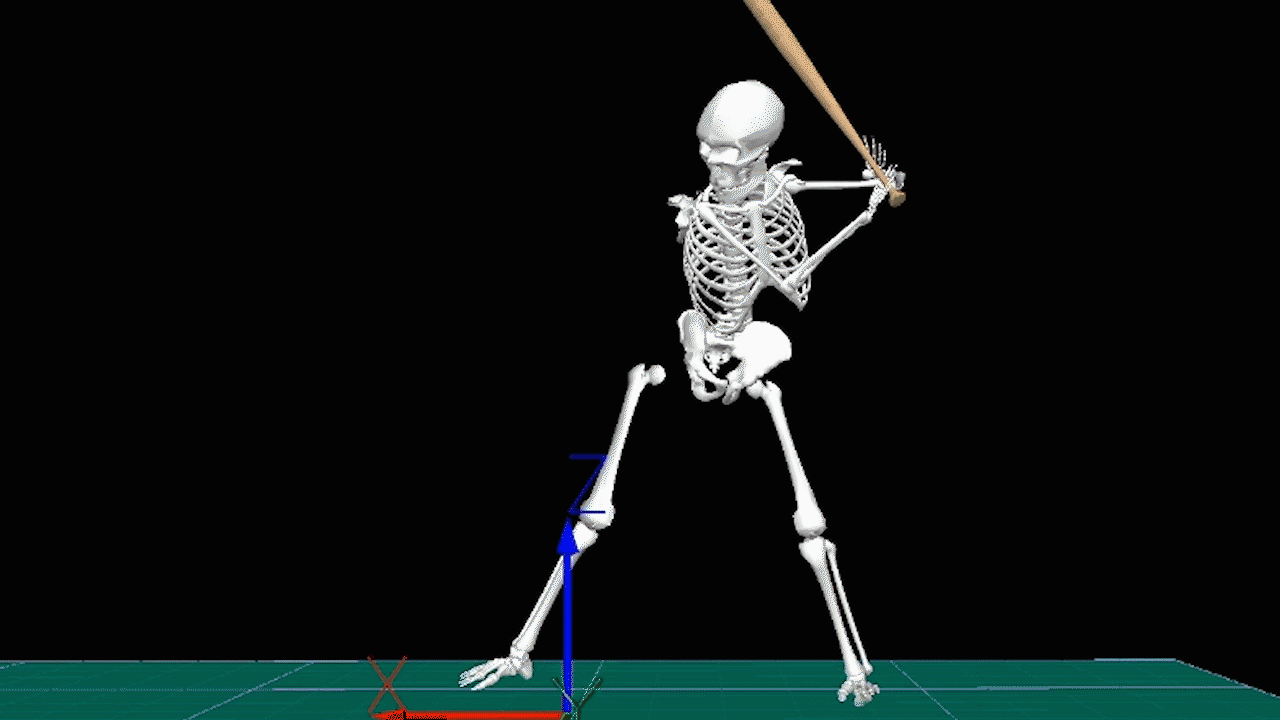The Hitting Intern Blog | Driveline Week 6

As a coach, I have probably used the word “compete” in a sentence way too many times. We are never satisfied with how our team competes during a loss to a team we feel we should beat.
We also use this word to keep morale high in the clubhouse or to boost our egos when we played a good team close but came up short. The phrase, “Well, at least we competed” is uttered or races through the minds of coaches and players alike.

Foundations of Hitting
30 modules teaching you everything we know about hitting and hitting mechanics.
Compete every day
A rating system for competing shouldn’t be next to the win or loss column. Competing is an everyday culture. If you don’t compete during the game, there is a good chance you didn’t compete enough during practice.
Even though it is March and there are not as many athletes in the gym currently, the feeling of competition fills the buildings at Driveline Baseball. There is a competitive environment here within all the departments.
The strength coaches are constantly working on research and staying strong themselves by lifting. The pitching coaches all still work on throwing, and the majority of them probably throw harder than your current ace. The hitting trainers all jump in occasionally to hit a round or two when a group is short a hitter, and you can almost guarantee a trainer will jump in and compete with the group during the cage game.
The Driveline trainers all played baseball in some capacity. As a matter of fact, many Driveline employees can hold their own in a baseball setting. I think the Driveline culture of pushing the game of baseball bleeds into the personalities that work here, or the culture may attract those that like to compete.
Being competitive is part of being an athlete, and most days I come into work here, I notice the employees engaged in some competition or wager. For example, one week, John Soteropulos and Andrew Aydt had a bet. If Aydt could hit a ball 100 mph off the short machine, John would take his shifts feeding the machine for the whole week. If Aydt did not get 100 mph off the machine, Aydt would take John’s shifts feeding the machine for the week.
Aydt hit 99.6 mph.
One day I hit with John, hoping he could help me understand K-Vest. But, sure enough, it turned into him competing against himself to reach an exit velocity number and me competing against myself to reach an EV number.
“Swoosh, ding!”
I look up at the Hittrax screen. “Nope, didn’t get it!”
“Swoosh, ding!’
I look up again. “Nope!”
Swing after swing, I feel the urge to continue to work harder and harder, experimenting with anything to see if I can create a feel or at least a result I want.
“Swoosh, kong!”
My hands ring. “That ain’t it!” I yell at John. “Three more, then we can switch!”
Like any hitter in a cage, “three more” really means six to ten more—it just depends on how bad you are.
As I continue to hit, I get flashbacks to when I would spend hours in the cage with a teammate just hitting aimlessly, searching for a feel, not even sure if it played. I flashback further to when my brother and I would hit in our cage at home until neighbors called my parents and complained that we were hitting until 11 pm.
The fun Wiffle ball game flashbacks came next, where I would step into the box as my favorite shortstop, Nomar Garciaparra, fix my batting gloves, tap my toes and think to myself, “I am a real threat to hit a home run here.” I was never a home run threat in my entire career unless I was playing Wiffle ball. Sometimes that was the only time my swing felt good. “Hmmmm?”
Flash forward to “Swoosh, ding!” I look up, but, “Still nope, your turn John.” I say it with a smile, but internally I’m infuriated with myself. Although this is extremely fun, failing brings out the competitive feeling that you get when you play the game of baseball.
Short Box Tuesday
Tuesdays are short box days where the hitting groups get a chance to face live pitching.
We move the portable mound up in front of the regular mound and compete against the hitters. All the hitting trainers have to throw about 50 to 70 pitches, and sometimes a strength coach jumps in and pitches. We get a special appearance from a pitching coach who can still ramp it up from a regular distance.

Become the Hitter You Want To Be
Train at Driveline
Some guys come over from the Customer Relations Department with absolutely nasty stuff (one guy played pro ball). I love watching and throwing short boxes and getting to watch some of the younger hitters compete. My arm, however, would tell you otherwise.
This isn’t regular BP—I cannot reiterate that enough. If someone is scheduled to throw, you will find them preparing with Plyo Ball ®, J-bands, shoulder tubes, wrist weights, and anything else they think is necessary to get ready to throw. I think I will soon use duct tape as part of my routine, as I haven’t thrown with this intent in about nine years.
When your mind says, “Compete!” but your body, specifically your shoulder, says “WTF!”, there is some internal conflict. But I am competing nonetheless, and I will be ready for my next short box outing!
Batting Practice Before Driveline
When I was younger, playing little league, I specifically remember most of the dads being able to throw extremely good batting practice. One of my All-Star coaches, Doug Cole, always carried around a bucket of tennis balls. His batting practices for all his teams were only with tennis balls. He did this so he could throw as hard as possible without worrying about hurting his players (he also threw from a ¾ arm slot, it was a nightmare).
He would throw fastballs, curveballs, and changeups, and he always competed to get his hitters out. During the regular little league seasons, I always competed against Doug’s teams, as he had a son the same age as me. I competed against Doug’s teams from the ages of 8 to 14. His teams were always first or second, and they were still the best all-around hitting team in the league.
Meanwhile, my dad was similar to Doug but would throw regular baseballs. Surprisingly, my dad never hit any of his players with a pitch, which is impressive considering he held the hit by pitch record at UC Riverside for years.
Whenever my brother and I hit with my dad one-on-one, he would always ramp up the difficulty. I cannot count how many times I left the cage mad or crying because it was a bad night hitting against Dad.
Before arriving here at Driveline, I didn’t do consistent short box days at the colleges I was at. I remember last year doing it once for about 90 minutes—my arm was destroyed for like three weeks. Note to self: “Don’t do a short box without proper preparation.”
It was good to challenge hitters, but they were also super pissed because I was dicing them up, and this wasn’t a regular routine. Some might say, “Who cares if they are getting pissed?”, and I wasn’t too concerned with their feelings. But because I am very routinized, I can understand their frustration.
I used the machine for short box, and we did the machine a lot this past fall at the college I was coaching at. There were two days the entire fall that an assistant or I threw regular “feel good” batting practice. Having the machine set to just fastballs or just sliders is good to some extent, but eventually, hitters can start dialing in mindlessly to those pitches. Short box doesn’t allow that type of mindset to creep in and lay still in a hitter’s routine or thought during practice.
Coaching Short Box
Now that I have experienced short box days here at Driveline, this is how I would incorporate them in a college setting. A short box can be used as a way to give your pitchers a break if your roster is limited. If you have a coach or coaches, designate a day to throw from a certain distance. If it takes longer for you to recover, maybe you do a short box once a month or twice a month.
If you have a ton of players that come in, you could create a JV team or a development team that is there to compete against and to develop. One day a week, have the development team pitchers throw against the varsity team. If velocity is an issue for most of the development team, then just scoot up a portable mound a couple of feet. This could be the day you do not do intrasquad or an off-day for your pitchers. You could take your development hitters (if they are standing around) and have them stand in during bullpens for the varsity pitchers.
It sounds like a waste of time to create a development team and a lot of work to maintain one, but these players are most likely going to be cut. This way you can actually help your varsity team AND, at the same time develop players that still want to play the game of baseball.
Short box days are crucial to seeing the development of your hitters. If you have enough resources and enough players and coaches, doing a short box two to three times a week could be reasonable. The more “live” type pitching your hitters see, the faster their development will be. And who knows, maybe a short box was what a pitcher from the development team needed–some mound time against college hitters to sharpen their skills and prove they can play at the college level.
Get Players Involved
I think that many college programs need to keep roster sizes larger than necessary for enrollment reasons at schools (mainly private schools). Finding ways to actually use these players while also creating a great environment and opportunity for them to improve could vastly improve the game of baseball. I have said this many times: we need more kids playing baseball longer.
As coaches, we also need a plan to develop them. Use your players and their abilities, even if they are limited. Instead of shoving players in the corner, or even cutting them right away, find a way to get them involved. Only having them contribute to the team with their tuition to the college is a terrible system, and needs to change.
Train at Driveline
Interested in training with us? Both in-gym and remote options are available!
- Athlete Questionnaire: Fill out with this link
- Email: support@drivelinebaseball.com
- Phone: 425-523-4030
Comment section